Uncategorized
Crypto Daybook Americas: Bitcoin Tops $106K as New Accounting Rule Takes Effect
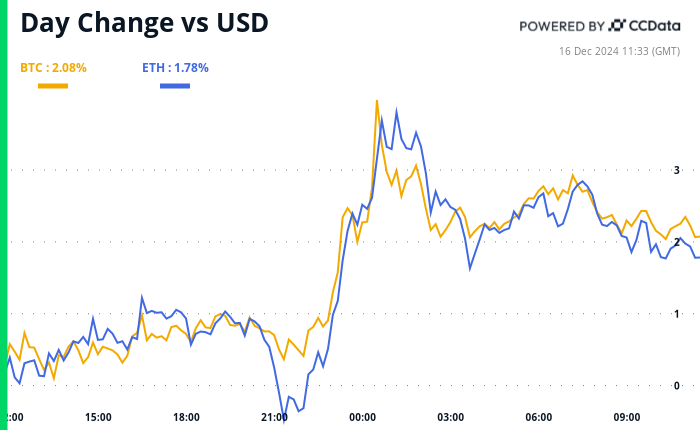
By Omkar Godbole (All times ET unless indicated otherwise)
Imagine you have a rare collectible. It’s aged like fine wine, but only shows the original price tag. That’s how U.S. companies have been told to value their bitcoin … stuck in the past instead of reflecting its true worth. As of today, that changes.
Yes, today is when the FASB fair value accounting rule, which passed in 2023, takes effect, allowing companies to report their bitcoin holdings at fair market value instead of the purchase price. The change gives firms more control over how they classify these assets and may accelerate corporate adoption. Note, though, the new standard doesn’t apply to NFTs, wrapped tokens or internally generated digital assets.
Alex Kuptsikevich, an analyst at The FXPro, said, quoting a JPMorgan report, that publicly traded companies have already begun implementing a MicroStrategy-like strategy to add BTC to their balance sheets.
The rule change might also explain why BTC spiked above $106,000 in Asia, boosted further by President-elect Donald Trump’s assurance to create a strategic BTC reserve and a short squeeze on Deribit.
The price has now pulled back to around $104,500, probably due to concern the Fed’s much anticipated rate cut this Wednesday will come with projections for fewer reductions next year. BTC is trading at a discount on Coinbase compared with Binance, a sign of weaker demand in the U.S., a CryptoQuant tracker shows.
Looking more broadly, ETH failed to establish a foothold above $4,000 amid reports of large withdrawals of staked ether from Lido Finance. Payments-focused XRP traded more than 2% lower, weakening a bullish technical pattern. Ripple CTO David Schwartz raised concerns about FOMO-driven volatility before the debut of the company’s RLUSD stablecoin, which it plans to use for cross-border payments alongside XRP. Early price fluctuations and high pre-launch bids don’t quite reflect the true market value, Schwartz said.
On a brighter note, Solana’s industry-beating revenue generation has been grabbing eyeballs. Ryan Watkins, co-founder of Syncracy Capital, said: «Solana generated a staggering $431 million in fees over the past 30 days – more than all other Layer 1s combined!» Solana now captures 53% of the global layer 1 fee pool, largely driven by the surge in AI activity. Still, the token dipped 3%, threatening to break below the 50-day SMA, a key indicator for near-term market trends.
Chainlink’s LINK defied the weakness in major tokens, rising 4% thanks to whale buying. Data from LookOnChain revealed that a whale withdrew 429,999 LINK, worth over $12 million, over the weekend.
Lastly, in traditional markets, the yield on the 10-year Treasury note looks to break out of a prolonged downtrend as observers anticipate a hawkish Fed rate cut this week. This hardening of yields could inject volatility into risk assets, including cryptocurrencies. So, stay alert!
What to Watch
Crypto:
Dec. 18: CleanSpark (CLSK) Q4 FY 2024 earnings. EPS Est. $-0.18 vs Prev. $-1.02.
Macro
Dec. 16, 9:45 a.m.: December’s S&P Global Flash US PMI data is released. Composite PMI Prev. 54.9.
Dec. 17, 8:30 a.m.: Statistics Canada releases November’s Consumer Price Index (CPI) report.
Inflation Rate YoY Prev. 2%.
Core Inflation Rate Prev. 1.7%.
Dec. 18, 2:00 p.m.: The Federal Open Market Committee (FOMC) releases its fed funds target rate, currently 4.50%-4.75%. The CME’s FedWatch tool indicates that interest-rate traders assign a 97.1% probability of a 25 basis-point cut. Press conference starts at 2:30 p.m. Livestream link.
Dec. 18, 10:00 p.m.: The Bank of Japan (BoJ) announces its interest rate decision. Short-term interest rate Est. 0.25% vs. Prev. 0.25%.
Dec. 19, 7:00 a.m.: The Monetary Policy Committee (MPC) of the Bank of England (BoE) announces its interest rate decision. Bank Rate Est. 4.75% vs Prev. 4.75%.
Dec. 19, 8:30 a.m.: The U.S. Bureau of Economic Analysis (BEA) releases third-quarter GDP (final).
GDP Growth Rate QoQ Est. 2.8% vs Prev. 3.0%.
GDP Price Index QoQ Est. 1.9% vs Prev. 2.5%.
Dec. 20, 8:30 a.m.: The U.S. Bureau of Economic Analysis (BEA) releases November’s Personal Income and Outlays report.
Personal Consumption Expenditure (PCE) Price Index YoY Prev. 2.3%.
Core PCE Price Index YoY 2.8%.
Dec. 24, 1:00 p.m. The Fed releases November’s H.6 (Money Stock Measures) report. Money Supply M2 Prev. $23.31T.
Token Events
Governance votes & calls
Avalanche’s (AVAX) Etna upgrade is scheduled to go live on Dec. 16 at 12 p.m. The upgrade aims to make it cheaper to transact and run validators on the network
Arbitrum DAO is voting on allocating 22 million ARB ($22.8 million) to cover operating costs for OpCo, an entity it can use to create a more structured approach to governance. The vote closes Dec. 19.
Livepeer (LPT) will have an open ecosystem call on Dec. 17. Discussion will revolve around updates, products, and treasury
Synapse (SYN) DAO is voting on allocating 50,000 OP tokens ($127,500) to establish and incentivize liquidity on Velodrome. It is targeting $3 million to $5 million in TVL over a three-month period. The vote concludes Dec. 16.
Unlocks
Cardano (ADA) will unlock $19.75 million worth of tokens on Dec. 16, representing 0.05% of circulating supply.
Arbitrum (ARB) will unlock $94.05 million worth of tokens on Dec. 16, representing 2.34% of circulating supply.
DYdX (DYDX) will unlock $11.7 million worth of tokens on Dec. 17, representing 0.57% of circulating supply.
Token Launches
Binance announced that data sovereignty platform Vana (VANA) will release a token on the launchpool. Trading starts Dec. 16.
Conferences:
Day 1 of 2: Blockchain Association’s Policy Summit (Washington D.C.)
Jan. 13-24: Swiss WEB3FEST Winter Edition 2025 (Zug, Zurich, St. Moritz, Davos)
Jan. 17: Unchained: Blockchain Business Forum 2025 (Los Angeles)
Jan. 18: BitcoinDay (Naples, Florida)
Jan. 20-24: World Economic Forum Annual Meeting (Davos-Klosters, Switzerland)
Jan. 21: Frankfurt Tokenization Conference 2025
Jan 30-31: Plan B Forum (San Salvador, El Salvador)
Derivatives Positioning
The futures basis for BTC and ETH has climbed to levels we saw during the initial breakthrough of $100,000, making cash and carry trades increasingly attractive. Expect continued strong inflows into the spot ETFs as a result.
AAVE’s perpetual open interest has increased 7% in 24 hours, the most among major coins. The cumulative volume delta (CVD), however, has declined, indicating net selling pressure in the market.
Looking at BTC options expiries extending to Jan. 31, we’re seeing calls trading at less than a 2.5 volatility premium to puts, a decline from last week’s 4-5 premium. It seems traders aren’t jumping on the latest surge to record highs quite as eagerly. It’s similar in ETH options.
Notable traders include a BTC bull call spread involving $115,000 and $125,000 strikes expiring Jan. 31 and a large short position in ETH $4,100 call expiring on Dec. 20.
Market Movements:
BTC is up 3.4% from 4 p.m. ET Friday to $104,645.81 (24hrs: +2.33%)
ETH is up 1.38% at $3,951.85 (24hrs: +2.36%)
CoinDesk 20 is down 0.94% to 3,954.73 (24hrs: +0.27%)
Ether staking yield is unchanged at 3.04%
BTC funding rate is at 0.01% (10.95% annualized) on Binance

DXY is unchanged at 107.00
Gold is up 0.83 at $2,678.00/oz
Silver is up 1.44% to $31.16/oz
Nikkei 225 closed unchanged at 39,457.49
Hang Seng closed -0.88% at 19,795.49
FTSE is down 0.41% at 4,947.81
Euro Stoxx 50 is up 0.4% at 4,897.96
DJIA closed on Friday -0.17% to 43,828.06
S&P 500 closed unchanged at 6,051.09
Nasdaq closed +0.12% at 19,926.72
S&P/TSX Composite Index closed -0.54% at 25,274.30
S&P 40 Latin America closed -1.26% at 2,320.17
U.S. 10-year Treasury was unchanged at 4.38%
E-mini S&P 500 futures are up 0.19% to 6,067.00
E-mini Nasdaq-100 futures are up 0.29% to 21,859.75
E-mini Dow Jones Industrial Average Index futures are unchanged at 43,901.00
Bitcoin Stats:
BTC Dominance: 57.50% (24hrs: +0.57%)
Ethereum to bitcoin ratio: 0.0377 (24hrs: -0.37%)
Hashrate (seven-day moving average): 796 eh/s
Hashprice (spot): $63.2
Total Fees: 9.6 BTC/ $980,000
CME Futures Open Interest: 200,830
BTC priced in gold: 39.4oz
BTC vs gold market cap: 11.24%
Bitcoin sitting in over-the-counter desk balances: 406,400 BTC
Basket Performance
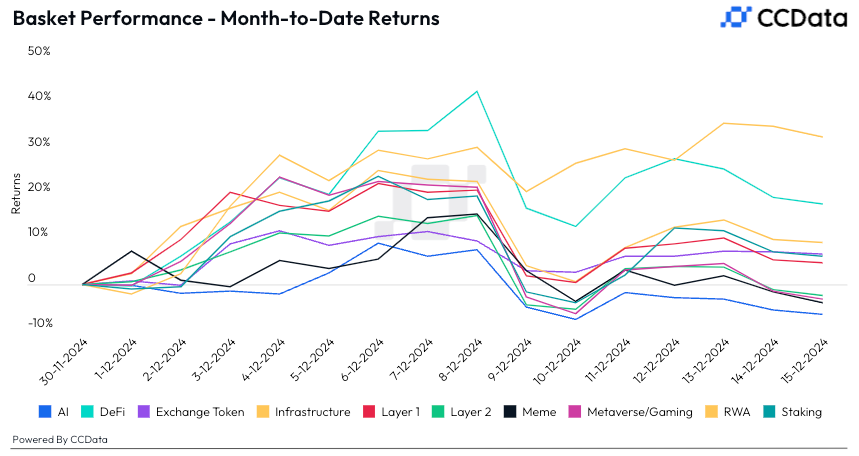
Technical Analysis
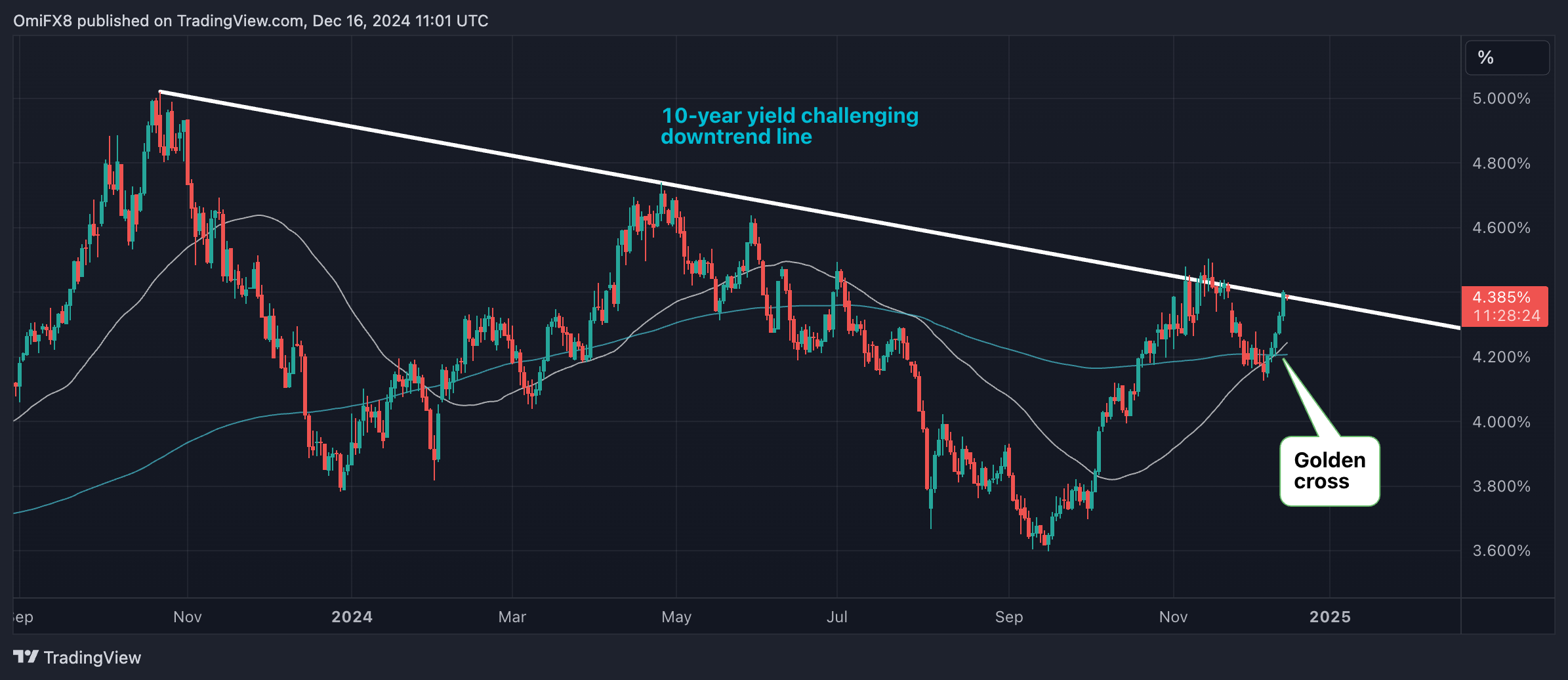
The benchmark bond yield looks set to break through a trendline that represents a downtrend from October 2023 highs.
The golden cross of the 50- and 200-day SMAs suggests it might just do, suggesting tough times for risk assets.
Crypto Equities
MicroStrategy (MSTR): closed on Friday at $408.67 (+4.2%), up 5.51% at $431.20 in pre-market.
Coinbase Global (COIN): closed at $310.58 (-0.76%), up 2.2% at $317.46 in pre-market.
Galaxy Digital Holdings (GLXY): closed at C$28.96 (+5.5%)
MARA Holdings (MARA): closed at $22.73 (+0.66%), up 3.61% at $23.55 in pre-market.
Riot Platforms (RIOT): closed at $12.99 (+5.35%), up 2.77% at $13.35 in pre-market.
Core Scientific (CORZ): closed at $15.55 (+0.06%), up 2.06% at $15.87 in pre-market.
CleanSpark (CLSK): closed at $12.02 (-2.51%), up 2.33% at $12.30 in pre-market
CoinShares Valkyrie Bitcoin Miners ETF (WGMI): closed at $27.36 (-1.79%), up 3.33% at $28.27 in pre-market.
Semler Scientific (SMLR): closed at $67.17 (-6.5%), up 4.26% at $70.03 in pre-market.
ETF Flows
Spot BTC ETFs:
Daily net inflow: $428.9 million
Cumulative net inflows: $35.57 billion
Total BTC holdings ~ 1.131 million.
Spot ETH ETFs
Daily net inflow: $23.6 million
Cumulative net inflows: $2.26 billion
Total ETH holdings ~ 3.514 million.
Source: Farside Investors
Overnight Flows
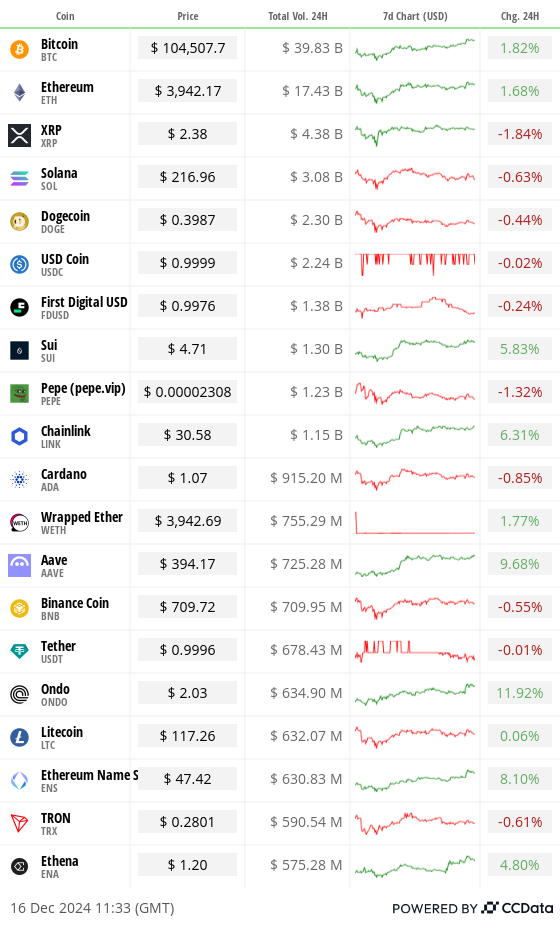
Chart of the Day
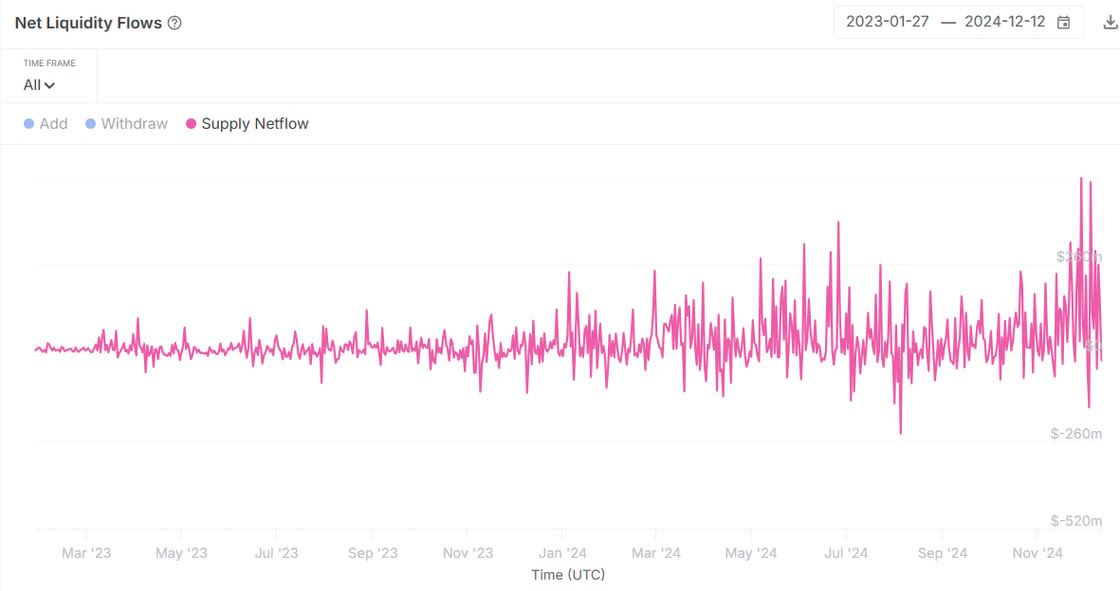
Decentralized lending giant AAVE’s market is on fire as net inflows soared to an impressive $500 million in the past week.
This represents increased risk-taking in the crypto market.
While You Were Sleeping
Bitcoin Soars to Record High Above $106K, Then Retreats as Hawkish Fed Rate Cut Looms (CoinDesk): Bitcoin surged to $106,000 as traders anticipated a 25-basis-point Fed rate cut on Wednesday despite concerns about a slower pace of easing in 2025.
Bitcoin Traders Now Target $120K as Bullish ‘Santa Claus Rally’ Gains Steam (CoinDesk): Traders see bitcoin extending its upward trajectory toward the $120,000 level, powered by speculation about a federal bitcoin reserve, growing institutional interest and seasonal patterns.
MicroStrategy to Enter Nasdaq 100, Exposing Bitcoin-Linked Stock to Billions in Passive Investment Flows (CoinDesk): MicroStrategy (MSTR) will join the Nasdaq 100 index on Dec. 23, making it a required holding for all ETFs tracking the index, such as Invesco’s $300 billion QQQ Trust.
China’s Key Bond Yield Hits Fresh Record Low as Data Disappoints (Bloomberg): China’s 10-year sovereign yield fell to 1.71% Monday as weak economic data fueled expectations of further stimulus, with analysts predicting possible rate cuts by the People’s Bank of China to counter deflation.
The Fed’s Game Plan on Interest-Rate Cuts Keeps Shifting (The Wall Street Journal): Federal Reserve Chair Jerome Powell, needing to balance inflation concerns, labor market signals and market expectations, faces internal divisions ahead of a potential third interest-rate cut this week.
Yuan’s Fall Would Be a Gift to Bank of Japan (Reuters): Chinese leaders are considering weakening the yuan to offset potential U.S. tariffs, which could pressure Asian currencies but help the Bank of Japan by supporting yen depreciation ahead of its Wednesday policy meeting.
In the Ether
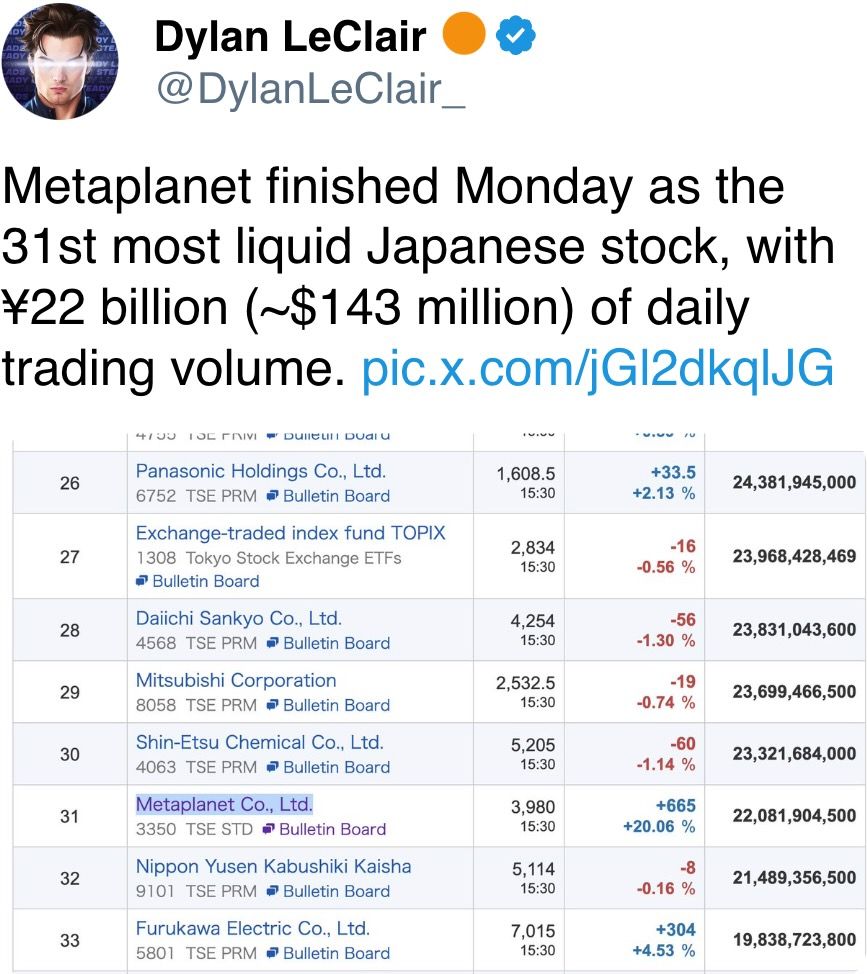

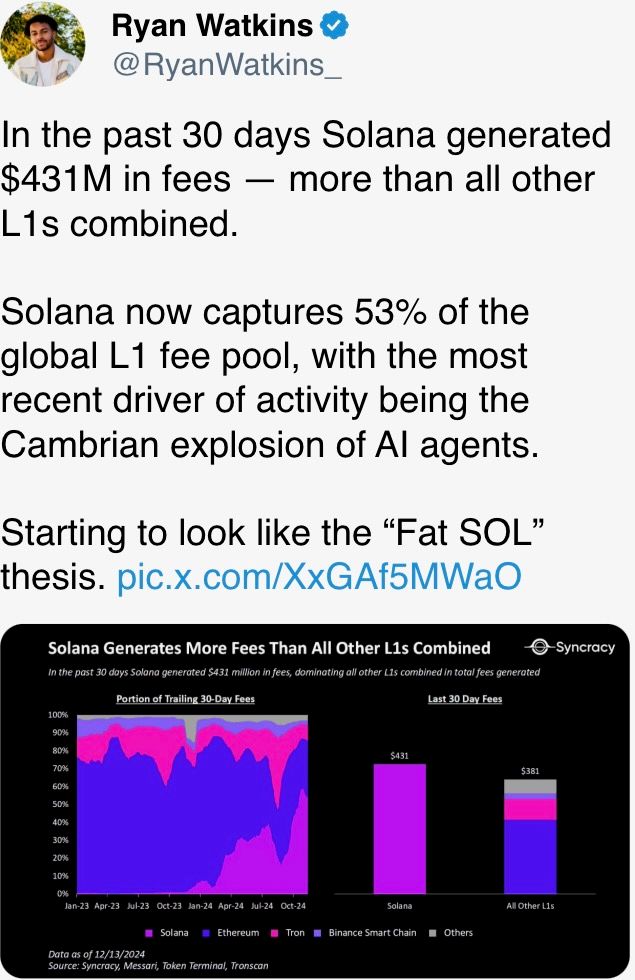
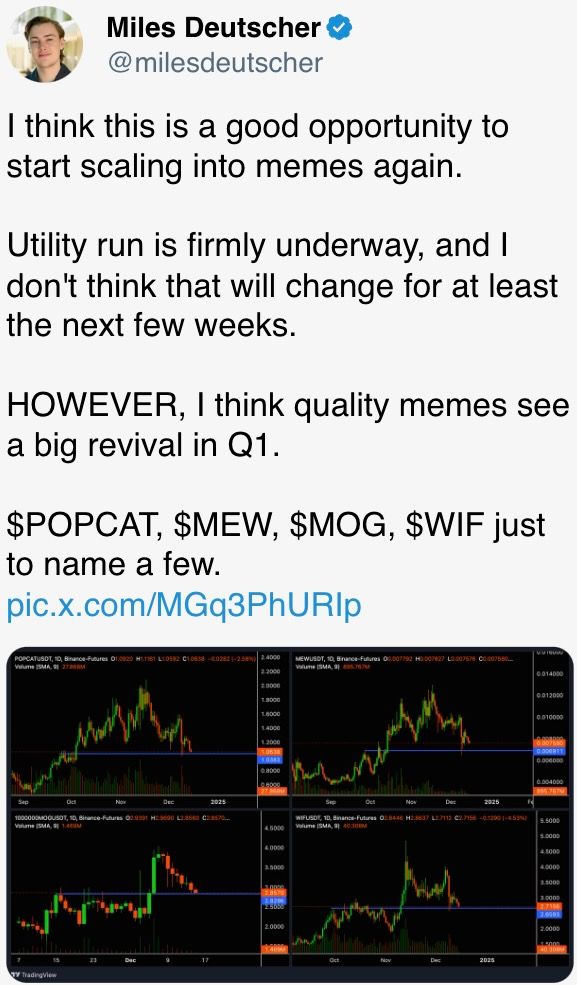

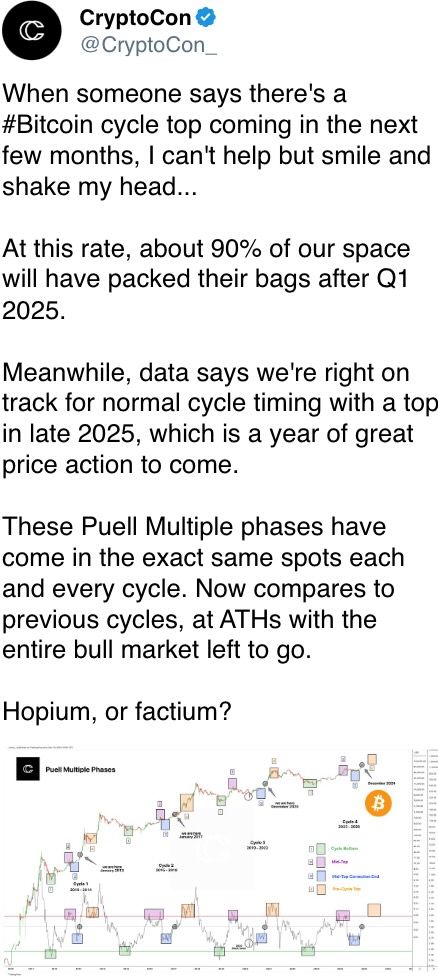
Business
HBAR Retreats Amid Constrained Range Trading and Diminishing Volumes
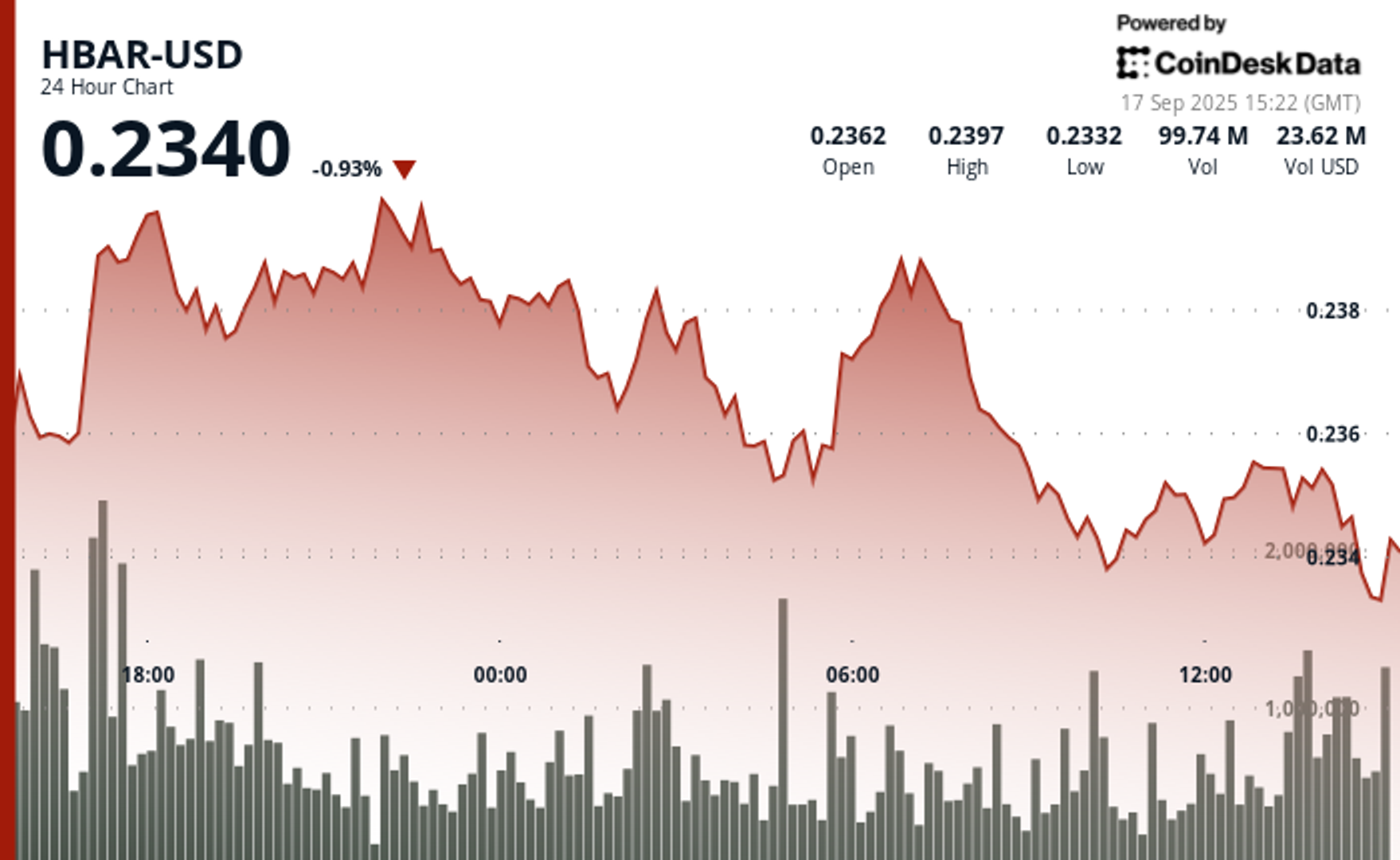
HBAR spent much of the past 23 hours locked in a narrow range, oscillating between $0.23 and $0.24 in what amounted to just 2% volatility. The token briefly touched session highs at $0.24 on Sept. 16 around 18:00 UTC before sliding lower, ultimately finding repeated support near $0.23. Multiple rebound attempts from that level throughout Sept. 17’s morning trading hinted at a potential price floor, though conviction remained limited.
Market activity tapered alongside the price drift. Trading volumes fell steadily after an early spike, underscoring weakening participation and suggesting that bullish momentum has largely faded. The constrained range and muted volatility reinforced the impression of indecision, with buyers and sellers unwilling to press for a breakout.
The final hour of the observed period offered a sharper display of market sentiment. At 13:33 UTC on Sept. 17, HBAR sold off abruptly from $0.24 to $0.23, accompanied by an outsized 2.56 million in volume just three minutes later. Yet the coin staged a measured recovery, climbing back to end near session highs, encapsulating the day’s push and pull between sellers and opportunistic dip buyers.
Overall, HBAR slipped 1% across the 23-hour window. While the establishment of support around $0.23 provides some stability, declining volumes and sustained downward pressure leave the market vulnerable. The swift sell-off and subsequent rebound illustrate the uncertainty still shaping HBAR’s outlook, with bearish sentiment prevailing but tempered by signs of technical resilience.
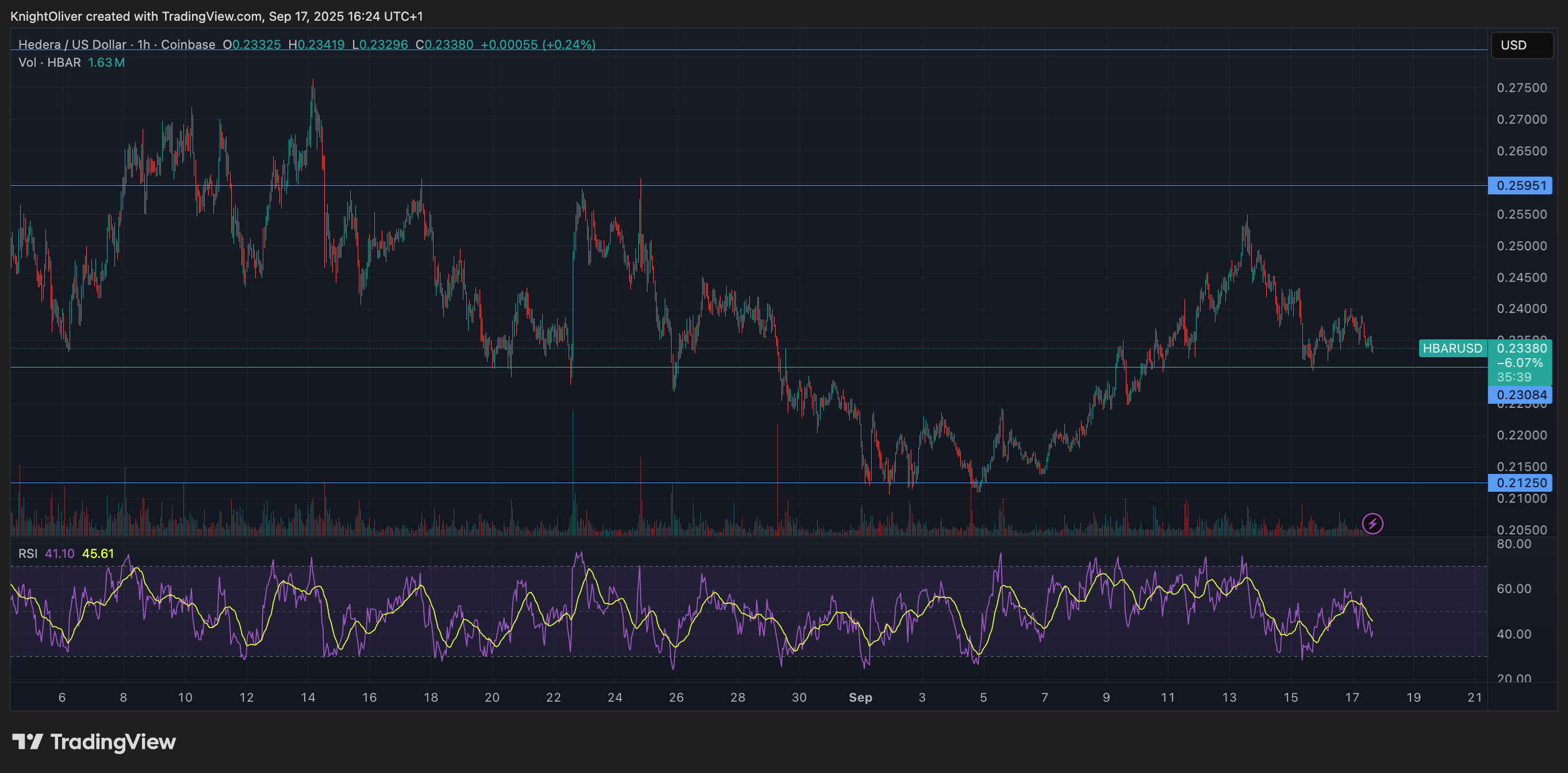
Technical Indicators Assessment
- Price action demonstrated consolidation within a 2% range between $0.23-$0.24 resistance and support thresholds.
- Volume contracted from 45.7 million to 4.7 million tokens indicating deteriorating market participation.
- Multiple rebounds at $0.23 support level suggest potential price floor establishment.
- Acute sell-off at 13:33 followed by recovery indicates volatile intraday sentiment fluctuations.
Disclaimer: Parts of this article were generated with the assistance from AI tools and reviewed by our editorial team to ensure accuracy and adherence to our standards. For more information, see CoinDesk’s full AI Policy.
Business
The Protocol: ETH Exit Queue Gridlocks As Validators Pile Up

Welcome to The Protocol, CoinDesk’s weekly wrap of the most important stories in cryptocurrency tech development. I’m Margaux Nijkerk, a reporter at CoinDesk.
In this issue:
- Ethereum Faces Validator Bottleneck With 2.5M ETH Awaiting Exit
- Is Ethereum’s DeFi Future on L2s? Liquidity, Innovation Say Perhaps Yes
- Ethereum Foundation Starts New AI Team to Support Agentic Payments
- American Express Introduces Blockchain-Based ‘Travel Stamps’
Network News
ETHEREUM VALIDATOR EXIT QUEUE FACES BOTTLENECK: Ethereum’s proof-of-stake system is facing its largest test yet. As of mid-September, roughly 2.5 million ETH — valued at roughly $11.25 billion — is waiting to leave the validator set, according to validator queue dashboards. The backlog pushed exit wait times to more than 46 days on Sept. 14, the longest in Ethereum’s short staking history, dashboards show. The last peak, in August, put the exit queue at 18 days. The initial spark came on Sept. 9, when Kiln, a large infrastructure provider, chose to exit all of its validators as a safety precaution. The move, triggered by recent security incidents including the NPM supply-chain attack and the SwissBorg breach, pushed around 1.6 million ETH into the queue at once. Though unrelated to Ethereum’s staking protocol itself, the hacks rattled confidence enough for Kiln to hit pause, highlighting how events in the broader crypto ecosystem can cascade into Ethereum’s validator dynamics. In a blog post from staking provider Figment, Senior Analyst Benjamin Thalman noted that the current exit queue build up isn’t only about security. After ETH has rallied more than 160% since April, some stakers are simply taking profits. Others, especially institutional players, are shifting their portfolios’ exposure. At the same time, the number of validators entering the Ethereum staking ecosystem has been steadily rising. Ethereum’s churn limit, which is a protocol safeguard that caps how many validators can enter or exit over a certain time period, is currently capped at 256 ETH per epoch (about 6.4 minutes), restricting how quickly validators can join or leave the network. The churn limit is meant to keep the network stable. With more than 2.5M ETH lined up, stakers on Sept. 16 face 44 days before even reaching the cooldown step. — Margaux Nijkerk Read more.
IS L2 DEFI EATING AT ETHEREUM’S L1 DEFI?: Ethereum is in the midst of a paradox. Even as ether hit record highs in late August, decentralized finance (DeFi) activity on Ethereum’s layer-1 (L1) looks muted compared to its peak in late 2021. Fees collected on mainnet in August were just $44 million, a 44% drop from the prior month. Meanwhile, layer-2 (L2) networks like Arbitrum and Base are booming, with $20 billion and $15 billion in total value locked (TVL) respectively. This divergence raises a crucial question: are L2s cannibalizing Ethereum’s DeFi activity, or is the ecosystem evolving into a multi-layered financial architecture? AJ Warner, the chief strategy officer of Offchain Labs, the developer firm behind layer-2 Arbitrum, argues that the metrics are more nuanced than just layer-2 DeFi chipping at the layer 1.In an interview with CoinDesk, Warner said that focusing solely on TVL misses the point, and that Ethereum is increasingly functioning as crypto’s “global settlement layer,” a foundation for high-value issuance and institutional activity. Products like Franklin Templeton’s tokenized funds or BlackRock’s BUIDL product launch directly on Ethereum L1 — activity that isn’t fully captured in DeFi metrics but underscores Ethereum’s role as the bedrock of crypto finance. Ethereum as a layer-1 blockchain is the secure but relatively slow and expensive base network. Layer-2s are scaling networks built on top of it, designed to handle transactions faster and at a fraction of the cost before ultimately settling back to Ethereum for security. That’s why they’ve become so appealing to traders and builders alike. Metrics like TVL, the amount of crypto deposited in DeFi protocols, highlight this shift as activity is moved to L2s where lower fees and quicker confirmations make everyday DeFi far more practical. — Margaux Nijkerk Read more.
EF STARTS DECENTRALIZED AI TEAM: The Ethereum Foundation (EF) is creating a dedicated artificial intelligence (AI) group to make Ethereum the settlement and coordination layer for what it calls the “machine economy,” according to research scientist Davide Crapis. Crapis, who announced the initiative on X, said the new dAI Team will pursue two priorities: enabling AI agents to pay and coordinate without intermediaries, and building a decentralized AI stack that avoids reliance on a small number of large companies. He said Ethereum’s neutrality, verifiability and censorship resistance make it a natural base layer for intelligent systems. The EF is a non-profit organization based in Zug, Switzerland, that funds and coordinates the development of the Ethereum blockchain. It does not control the network but plays a catalytic role by supporting researchers, developers and ecosystem projects. Its remit includes funding upgrades such as Ethereum 2.0, zero-knowledge proofs and layer-2 scaling, alongside community programs like the Ecosystem Support Program. The foundation also organizes events such as Devcon to foster collaboration and acts as a policy advocate for blockchain adoption. In 2025, EF restructured to handle Ethereum’s growth, emphasizing ecosystem acceleration, founder support and enterprise outreach. The new dAI Team represents a continuation of this shift toward specialized units addressing emerging technologies. — Siamak Masnavi Read more.
AMERICAN EXPRESS DABBLES IN BLOCKCHAIN TRAVEL STAMPS: American Express has introduced Ethereum-based «travel stamps» to create a commemorative record of travel experiences. The travel experience tokens, which are technically NFTs (ERC 721 tokens), are minted and stored on Coinbase’s Base network, said Colin Marlowe, vice president of Emerging Partnerships at Amex Digital Labs. The travel stamps, which can be collected anytime a traveler uses their card, are not tradable NTF tokens, Marlowe said, and neither do they function like blockchain-based loyalty points — at least for the time being. “It’s a valueless ERC-721, so technically an NFT, but we just didn’t brand it as such. We wanted to speak to it in a way that was natural for the travel experience itself, and so we talk about these things as stamps, and they’re represented as tokens,” Marlowe said in an interview. “As an identifier and representation of history the stamps could create interesting partnership angles over time. We weren’t trying to sell these or sort of generate any like short term revenue. The angle is to make a travel experience with Amex feel really rich, really different, and kind of set it apart,” he said. Fireblocks is also involved, supporting Amex as its Wallet-as-a-Service provider for the passport product, a Fireblocks representative said. The Amex travel app also includes a range of tools for travels and Centurion Lounge upgrades, the company said. – Ian Allison Read more.
In Other News
- Blockchain-based real world asset (RWA) specialists Centrifuge and Plume have launched the Anemoy Tokenized Apollo Diversified Credit Fund (ACRDX), backed by a $50 million anchor investment from Grove, a credit infrastructure protocol within the Sky Ecosystem. The fund gives blockchain investors exposure to Apollo’s diversified global credit strategy, spanning direct corporate lending, asset-backed lending and dislocated credit, a type of mispriced debt due to market stress and lack of liquidity. ACRDX will be distributed through Plume’s Nest Credit vaults under the ticker nACRDX, making the strategy accessible to institutional investors on-chain. By packaging Apollo’s portfolio in tokenized form, the fund aims to lower entry barriers and increase transparency for investors seeking exposure to private credit markets, according to a press release. — Ian Allison Read more.
- Google is taking a step toward merging artificial intelligence (AI) and digital money, rolling out a new open-source protocol that lets AI applications send and receive payments, which includes support for stablecoins, digital tokens pegged to fiat currencies such as the U.S. dollar, according to a press release. To incorporate stablecoin rails, Google teamed up with the U.S.-based crypto exchange Coinbase, which has been developing its own AI-integrated payments infrastructure. The company also worked with the Ethereum Foundation and coordinated with more than 60 other organizations, including Salesforce, American Express and Etsy, to cover traditional finance use cases. The move builds on Google’s earlier work to establish a standard for “AI agents.” These digital agents may eventually handle complex tasks, such as negotiating mortgages or shopping for clothes, without direct human input. — Oliver Knight Read more.
Regulatory and Policy
- Contrary to claims from the U.S. banking industry, stablecoins do not pose a risk to the financial system, according to the chief policy officer at crypto exchange Coinbase (COIN), Faryar Shirzad. Banks’ claims that they do are are myths crafted to defend their revenues, he wrote in a blog post. «The central claim — that stablecoins will cause a mass outflow of bank deposits — simply doesn’t hold up,» Shirzad wrote. «Recent analysis shows no meaningful link between stablecoin adoption and deposit flight for community banks and there’s no reason to believe big banks would fare any worse.» Larger lenders still hold trillions of dollars at the Federal Reserve and if deposits were really at risk, he argued, they would be competing harder for customer funds by offering higher interest rates rather than parking cash at the central bank. According to Shirzad, the real reason for banks’ opposition is the payments business. Stablecoins, digital tokens whose value is pegged to a real-life asset such as the dollar, offer faster and cheaper ways to move money, threatening an estimated $187 billion in annual swipe-fee revenue for traditional card networks and banks. He compared the current pushback to earlier battles against ATMs and online banking, when incumbents warned of systemic dangers but, he said, were ultimately trying to protect entrenched profits. — Jesse Hamilton Read more.
- U.S. SEC Chair Paul Atkins said crypto’s time has come, pledging to modernize the U.S. securities rulebook and expand “Project Crypto” to bring markets on-chain. Speaking in Paris on Sept. 10 at the OECD’s inaugural Roundtable on Global Financial Markets, Atkins said the SEC is shifting away from enforcement-driven policymaking and will provide clear rules for tokens, custody, and trading platforms. “Policy will no longer be set by ad hoc enforcement actions,” he said, calling the new approach “a golden age of financial innovation on U.S. soil.” Atkins said most tokens are not securities and promised bright-line rules for determining when crypto assets fall under SEC oversight. He said entrepreneurs must be able to raise capital on-chain without “endless legal uncertainty” and pledged a framework for platforms that integrate trading, lending, and staking under one license. Custody rules will also be updated to allow investors and intermediaries multiple options. — Siamak Masnavi Read more.
Calendar
- Sept. 22-28: Korea Blockchain Week, Seoul
- Oct. 1-2: Token2049, Singapore
- Oct. 13-15: Digital Asset Summit, London
- Oct. 16-17: European Blockchain Convention, Barcelona
- Nov. 17-22: Devconnect, Buenos Aires
- Dec. 11-13: Solana Breakpoint, Abu Dhabi
- Feb. 10-12, 2026: Consensus, Hong Kong
- Mar. 30-Apr. 2: EthCC, Cannes
- May 5-7, 2026: Consensus, Miami
Business
Bullish Shares Rise 5% Ahead of Earnings After Crypto Exchange Secures New York BitLicense

Shares of Bullish (BLSH) rose 5% to $53.12 on Tuesday after the crypto platform secured a BitLicense from the New York State Department of Financial Services, a crucial regulatory approval that opens the door to offering spot trading and custody services to institutional clients in New York.
With the license, Bullish’s U.S. arm — Bullish US Operations LLC — can now legally serve advanced traders in the financial capital of the U.S., an important step in the company’s push to expand domestically. Until now, Bullish was only regulated in Germany, Hong Kong and Gibraltar. Bullish’s global parent is also CoinDesk’s parent company.
The license comes just a day after Cathie Wood’s ARK Invest significantly increased its exposure to the company. The ARK Innovation ETF (ARKK) acquired 120,609 shares while ARK Next Generation Internet ETF (ARKW) picked up 40,574 shares, together worth about $8.21 million.
Bullish, which runs a trading platform aimed at institutional investors, will report second-quarter earnings after markets close on Wednesday.
Earlier this week, investment bank Keefe, Bruyette & Woods (KBW) initiated coverage on the company with a «market perform» rating and a $55 price target. The firm called Bullish “a rare public play” on a crypto exchange built for institutions and noted that its entry into the U.S. could drive growth. KBW sees domestic expansion as a key catalyst.
Bullish debuted on the New York Stock Exchange in August through a direct listing. Its stock surged to $104 on opening day before closing at $68. Since then, shares have fallen 22%, with today’s BitLicense announcement providing a boost.
If Bullish succeeds in expanding its footprint in the U.S., it could emerge as a legitimate competitor to Coinbase, according to brokerage firm Bernstein. The firm said success will depend on the platform’s ability to execute on its U.S. launch plans, currently targeted for 2026, Bernstein said.
-

 Business11 месяцев ago
Business11 месяцев ago3 Ways to make your business presentation more relatable
-

 Fashion11 месяцев ago
Fashion11 месяцев agoAccording to Dior Couture, this taboo fashion accessory is back
-

 Entertainment11 месяцев ago
Entertainment11 месяцев ago10 Artists who retired from music and made a comeback
-

 Entertainment11 месяцев ago
Entertainment11 месяцев ago\’Better Call Saul\’ has been renewed for a fourth season
-

 Entertainment11 месяцев ago
Entertainment11 месяцев agoNew Season 8 Walking Dead trailer flashes forward in time
-

 Business11 месяцев ago
Business11 месяцев ago15 Habits that could be hurting your business relationships
-

 Entertainment11 месяцев ago
Entertainment11 месяцев agoMeet Superman\’s grandfather in new trailer for Krypton
-

 Entertainment11 месяцев ago
Entertainment11 месяцев agoDisney\’s live-action Aladdin finally finds its stars





